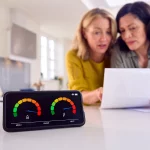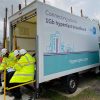Ofcom UK Make 700MHz TV Spectrum Band Available for Mobile Broadband
As widely expected Ofcom has today announced a decision to make radio spectrum in the 700MHz band, which is currently used for Digital Terrestrial TV (DTT) channels, available for use via future Mobile Broadband (4G, 5G) services by the start of 2022. Get ready to re-tune your TV or set-top-box.
The move will effectively force related TV services to be shifted into the adjacent 600MHz band (this is currently owned by Arqiva, but only as part of a temporary licence that has provisions for the necessary change of use), while mobile operators like Three UK, O2, Vodafone and EE will naturally become the primary beneficiaries.
Advertisement

The 700MHz band runs at a lower frequency than the other spectrum used for Mobile Broadband services, which among other things means that it can cover a wider area (better coverage for less cost) and also penetrates further through walls. On the flip side it can’t carry as much data, although the latest 4G (LTE-Advanced) and future 5G technologies will be able to get better performance out of it via solutions like Carrier Aggregation (i.e. harnessing more than one band at a time to deliver more data).
Ed Richards, Ofcom’s CEO, said:
“This is a crucial next step in the development of the UK’s communications infrastructure. This decision ensures that we are making the raw materials available with which investors and companies can build the services which will support the digital economy of the future.
More spectrum will be available for mobile broadband where demand is especially high, but the UK will retain a competitive terrestrial television platform as well.”
The telecoms regulator fears that demand for mobile data could be 45 times higher by 2030 than it is today and that mobile operators will thus require more capacity in order to keep pace, yet radio spectrum is a finite resource. Ofcom are also preparing to auction off spectrum in the 2.3GHz and 3.4GHz bands for the same reason, which is expected to take place in late 2015 or early 2016.
Meanwhile Ofcom said that the vast majority of TV watchers will only require “a simple retune of existing TV equipment” in order to adapt to the change, although a “very small minority of households (about 0.5%) might need to change their roof-top aerials – although this is unlikely to be necessary before 2019“. We covered these issues in more detail back in May 2014 (here).
Ofcom’s decision also includes an interesting summary of the perceived benefits of changing use in the 700MHz band.
Advertisement
The Benefits of Making 700MHz Available to Mobile
4.2.1 Mobile network cost savings from deploying fewer base stations. Analysys Mason estimates the potential savings are between £480m -770m, based on a 20 year analysis from 2022.
4.2.2 Improvements in mobile performance in hard to serve locations. Analysys Mason estimates the reduced cost of delivering performance improvements to be between £390m -480m.
4.2.3 Potential for lower consumer prices. Millions of consumers could benefit from lower mobile tariffs than would otherwise be offered, because we expect a significant proportion of the network cost savings to be passed through to consumers.
4.2.4 Extending data coverage. The possibility of extending data coverage beyond the current footprint, possibly through the use of a coverage obligation, could deliver significant additional social and economic benefits.
4.2.5 Potential for new services or technology to be deployed in the band. The 700 MHz band will be the only sub-1GHz band with harmonised use across such a large international footprint. This could support development of new services or technologies that would not otherwise be available to UK consumers.
4.2.6 Benefits of using the centre gap. Up to 25 MHz of spectrum in the centre gap could be available for other uses such as supplemental downlink (SDL) or PMSE.
4.2.7 Facilitating emergency services communications. The 700 MHz band may provide additional capacity for the next generation of emergency services communications.
Mark is a professional technology writer, IT consultant and computer engineer from Dorset (England), he also founded ISPreview in 1999 and enjoys analysing the latest telecoms and broadband developments. Find me on X (Twitter), Mastodon, Facebook, BlueSky, Threads.net and Linkedin.
« Ed’s Easy Diner Restaurants Upgraded with FREE WiFi


















































Comments are closed